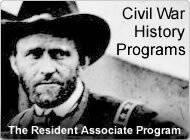
Book Review - Irish Rebels, Confederate Tigers, by James Gannon
The Smithsonian Associates Civil War E-Mail Newsletter, Volume 3, Number 6
Retired journalist James Gannon spent more than three years researching and writing the story of men whose valor and sacrifice in battle have never received the attention he feels they deserve.
The men are the Irish Catholic soldiers who fought on the front lines in the Civil War, as the 6th Louisiana Volunteers in the Army of Northern Virginia. "I approached this as looking at the soldier and his experiences in war," Gannon said. "I wasn't examining the cause per se, and I don't certainly align myself with the cause the South was fighting for. But, one can't help but be impressed, even rather awed by the courage, sacrifice and endurance of the individual soldier, whether he was on the Confederate side or the Union side."
Irish Catholics ended up in the South as part of the big wave of immigration that brought more than a million people from Ireland to the United States between the mid-1840s and the mid-1850s, forced from their homeland by the potato famine. Most landed in Northern cities, but New Orleans, "in 1860 was home to nearly 25,000 immigrants from Ireland, more than any other place in the South," said the author. Gannon's ancestors were in that group. He wanted to do a Civil War novel based on the life of his Irish-born great-grandfather and his younger brother both of whom fought for the Confederacy. The younger brother returned to New Orleans and died there in 1917 at the Confederate Soldiers Home. Gannon says digging into the family history led him to research and write a nonfiction book.
He visited battlefields at Gettysburg, Antietam, and Fredericksburg, and mined Civil War materials including the official records, first-person journals, diaries, and newspaper accounts. "I began to feel a personal connection to them. I had traveled to their battlefields, I walked around on the ground they fought, and found places where some of them died." The regiment was sent to Virginia with 900 men in 1861 and over four years fought in 25 battles. Only 55 men were left when they surrendered at Appomattox Court House on April 9, 1865. "Many of them wrote very good descriptions in their letters home. You know they wanted to let their families know exactly what was going on and what it was like for them. Many of them wrote long, detailed letters."
Gannon also managed to find the diaries of the regiment's chaplain, Father James B. Sheeran of New Orleans. Sheeran says they were a rowdy bunch--and he sometimes had to take away their liquor. He goes on to describe Eastern Sunday Mass in 1863. That morning, Father Sheeran woke up to find snow on the ground. In spite of the cold, every man showed up for Easter mass and kneeled in the snow. Father Sheeran was impressed by the men's faith despite the snow and the multitude of hardships which the war, weather, and the physical deprivations of campaigning brought to them.
Much has been written about the importance of religion during this era, and the Catholics were no different. For both North and South, "religion was an important part of their whole outlook; they risked their lives constantly, knowing that the next day they might be meeting their God."

